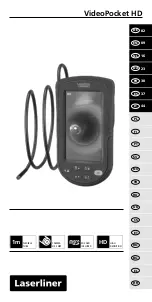
64 Performance Test
SR620 Universal Time Interval Counter
Set the generator to 100 MHz and the output
level to -2dBm. Measure the frequency. Set
the output level to +1dBm and the frequency
to 300MHz. Measure the frequency. The
frequencies should read:
setting
Frequency Reading
100MHz
100MHz ± 10 Hz
300MHz
300MHz ± 30 Hz
Record the results.
8) Set the SR620's A input to UHF. Set the A
trigger level to 0.00V.Set the generator to
300MHz with a -22dBm output level. Measure
the frequency. Set the generator to 1.3GHz at
an output level of +5dBm. Measure the
frequency. The frequencies should read:
setting
Frequency Reading
300MHz
300MHz ± 30 Hz
1.3GHz
1.3 GHz ± 130Hz
Record the results.
9) Repeat steps 7 and 8 for channel B. Record
the results.
Trigger Level Accuracy
These tests confirm the accuracy of the SR620's
trigger level calibration.
specification: 15mV + 0.5% of setting
1) Attach the SR620 rear panel D/A #0 output to
the channel A input. Also tee this signal to the
voltmeter (note: noise from the voltmeter can
produce false triggering of the SR620. A 1-
10uF capacitor across the inputs of the
voltmeter solves this problem.).
2) Set the SR620 to time mode. Set the A input
to1 Mohm, + slope, and the A trigger threshold
to 0.00V.
3)
Set the D/A output to -1.0V and slowly
increase the voltage until the A TRIG LED
flashes. Record this voltmeter reading. The
voltage should be 0.00V ±15mV.
4) Set the A trigger level to 4V. Slowly increase
the D/A #0 voltage from 0 V until the A TRIG
LED flashes. Record this voltage. The
voltage should be 4.0V ±30mV.
5) Set the A trigger level to AUTO and the D/A #0
to 1V. Read the trigger level. Record this
result. The value should be 1.0V ±50mV.
6) Repeat steps 2,3, 4, and 5 for channel B and
record the results.
D/A Output Accuracy
These tests verify the accuracy of the rear panel
D/A outputs.
specification: 0.3% full scale (±30mV)
1) Connect the voltmeter to the D/A 0 output.
2) In the Scn submenu of the SR620's
configuration menus set the two D/A outputs
to D/A mode (not chart).
3) Set D/A 0 to -10.00V. Measure the output
voltage and record the result. Verify that the
reading is -10.00V ±30mV.
4) Set D/A 0 to 0.00V. Measure the output
voltage and record the result. Verify that the
reading is 0.00V ±30mV.
5) Set D/A 0 to +10.00V. Measure the output
voltage and record the result. Verify that the
reading is +10.00V ±30mV.
6) Repeat steps 3, 4, and 5 for D/A output 1.
Record the results.
DVM Input Accuracy
These tests verify the accuracy of the DVM inputs.
specification: 0.3% full scale
1) Attach the SR620 D/A #0 output to DVM input
0. Attach the voltmeter so that it monitors the
power supply voltage.
2) Set the SR620 display to DVM.
3) Set D/A output #0 to 0.00 V. Compare the
SR620 reading to that of the voltmeter. The
difference should be < 6mV. Record the
difference.
4) Set D/A output #0 to 1.80 V. Compare the
SR620 reading to that of the voltmeter. The
difference should be < 6mV. Record the
difference.
Summary of Contents for SR620
Page 2: ...SR620 Universal Time Interval Counter...
Page 6: ...iv Table of Contents SR620 Universal Time Interval Counter...
Page 8: ...vi Safety and Preparation for Use SR620 Universal Time Interval Counter...
Page 12: ...x Specifications SR620 Universal Time Interval Counter...
Page 58: ...42 Programming Commands SR620 Universal Time Interval Counter...
Page 72: ...56 Programming Examples SR620 Universal Time Interval Counter...
Page 76: ...60 Troubleshooting Tips SR620 Universal Time Interval Counter...
Page 82: ...66 Performance Test SR620 Universal Time Interval Counter...
Page 90: ...74 Calibration Procedure SR620 Universal Time Interval Counter...
Page 102: ...86 Circuit Description SR620 Universal Time Interval Counter...
Page 124: ...108 Parts List SR620 Universal Time Interval Counter...
















































